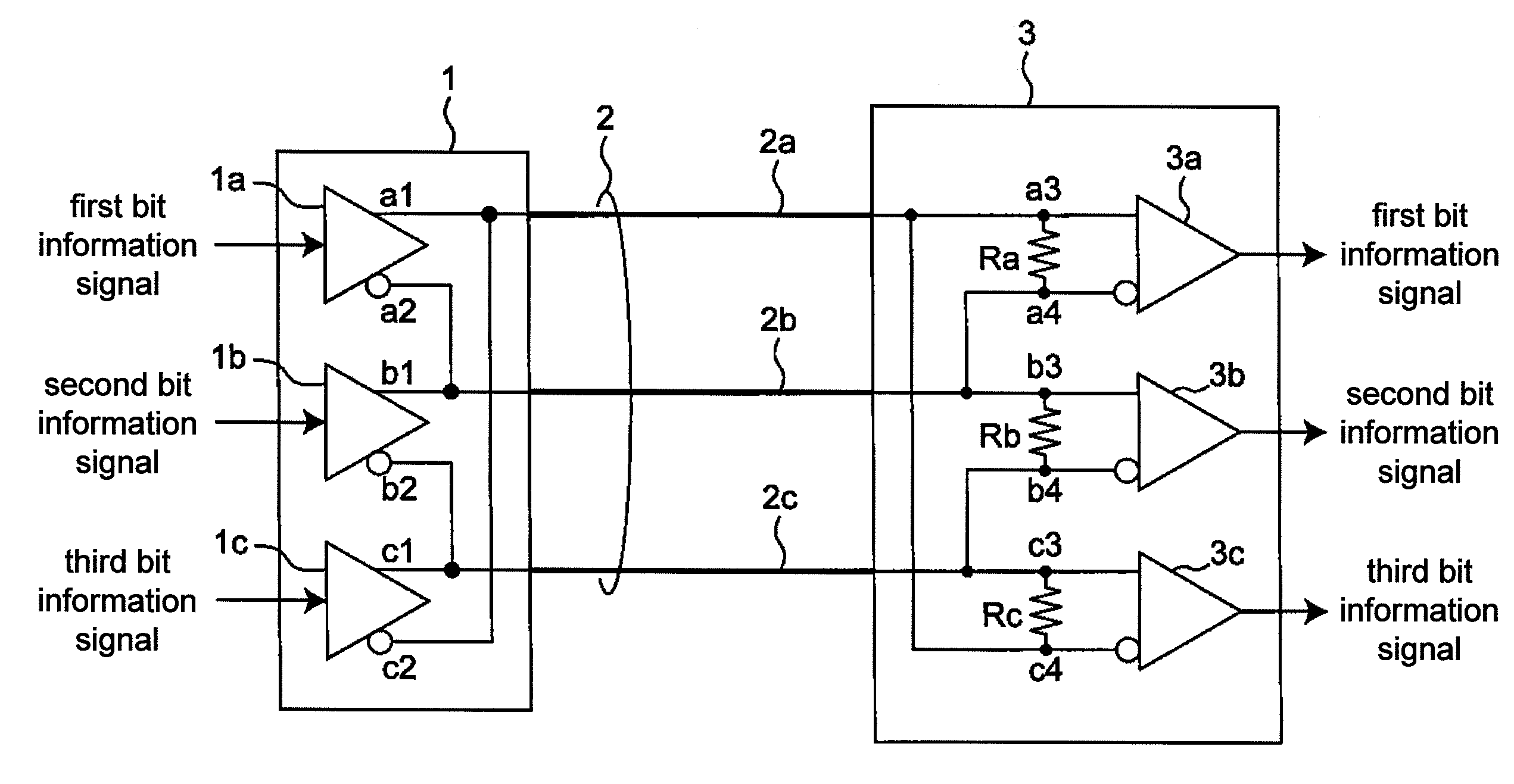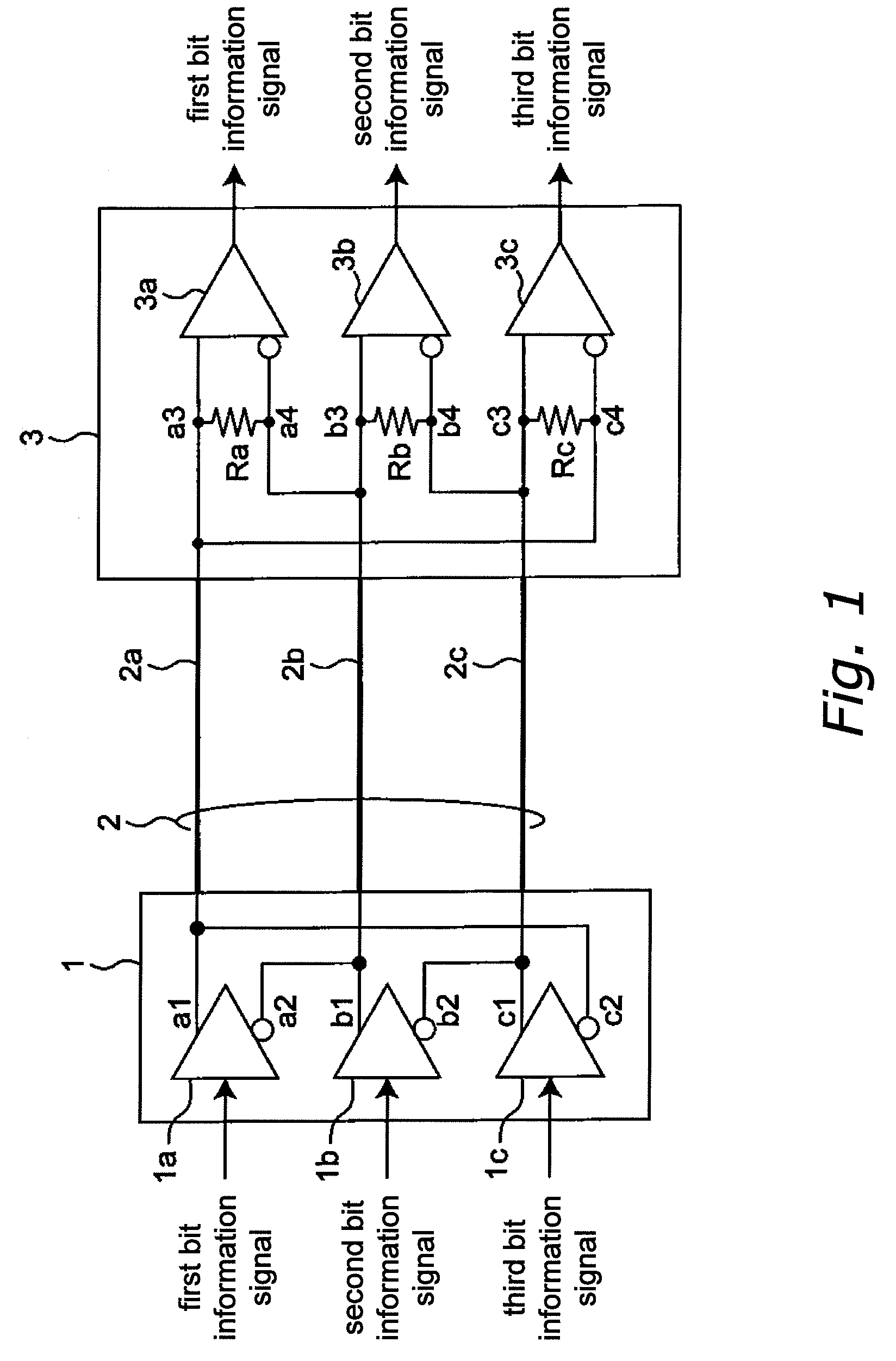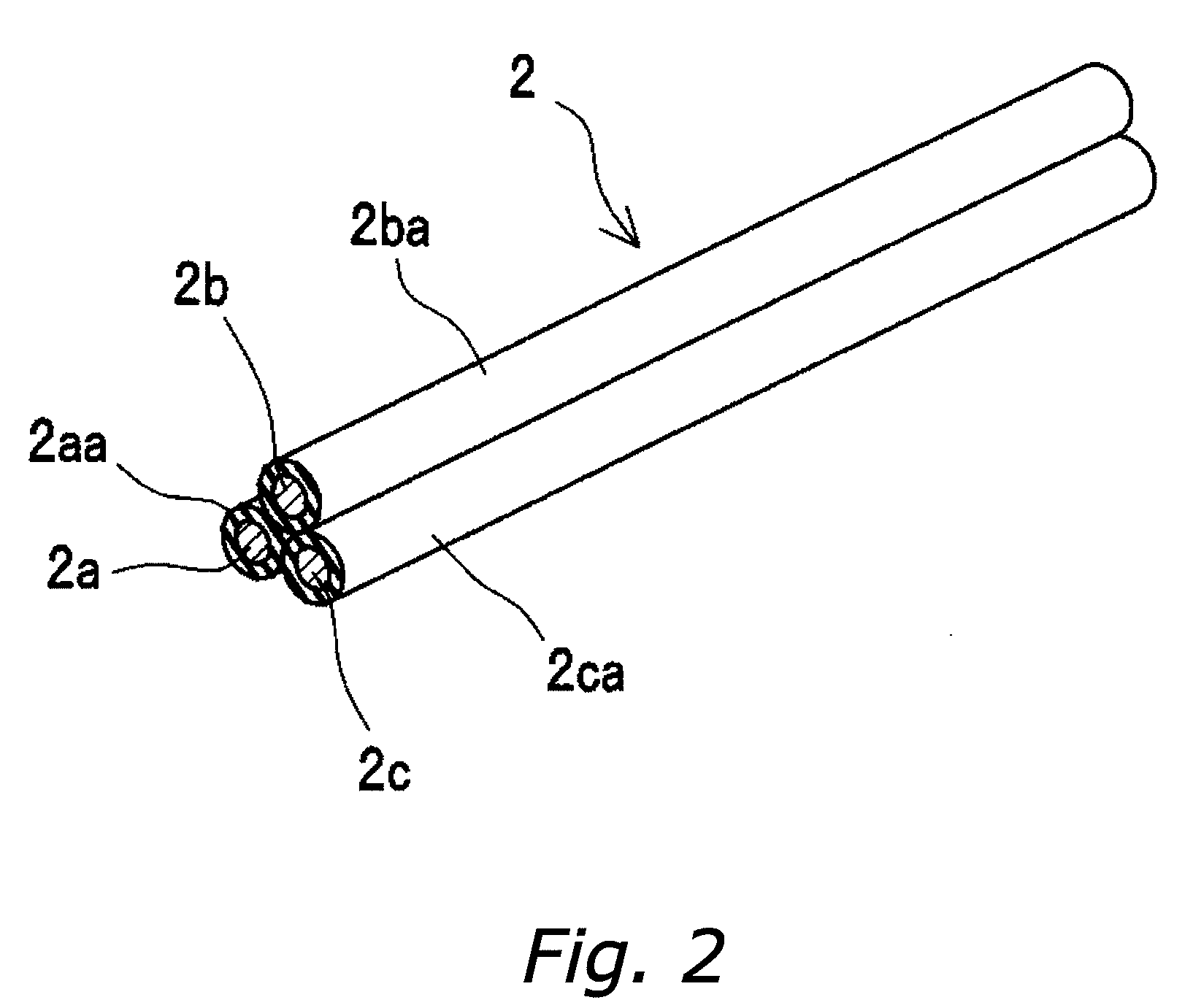Transmission cable
a technology of transmission cable and insulating support, which is applied in the direction of cables, conductive layers on insulating supports, conductors, etc., can solve the problems of increasing the wiring region of printed circuit boards, unable to reduce unwanted radiation noise, and large number, and achieves a constant distance and differential impedance. , the effect of small unwanted radiation nois
- Summary
- Abstract
- Description
- Claims
- Application Information
AI Technical Summary
Benefits of technology
Problems solved by technology
Method used
Image
Examples
first embodiment
[0059]
[0060]FIG. 1 is a circuit diagram of a differential transmission circuit according to a first embodiment of the invention, FIG. 2 is a perspective view showing a partial section of the configuration of the differential transmission cable 2 of FIG. 1, and FIG. 3 is a horizontal cross section of the differential transmission cable 2 of FIG. 1. With the differential transmission circuit of this embodiment, three bit information signals are differentially signaled by LVDS via the differential transmission cable 2, which is made from three signal lines 2a, 2b, and 2c.
[0061]In FIG. 1, the differential driver IC1 and the differential receiver IC3 are connected by the differential transmission cable 2, which is made from the three signal lines 2a, 2b, and 2c and serves as the differential transmission line, and the three bit information signals that are input to the differential driver IC1 are transmitted to the differential receiver IC3 via the differential transmission cable 2 and ...
modified example
[0110]FIG. 24 is a flowchart that illustrates this example of the bit information determination process that is executed by the decoding device 50 of the signal receiver 3B in a multiple differential transmission system according to a modified example of the third multiple differential transmission system (using the configuration of FIG. 20, differing only in the setting conditions). Here, the structural configuration of the multiple differential transmission system of FIG. 20 is used. The bit information determination process of FIG. 24 differs from the bit information determination process of FIG. 21 only in that the processing of step S13 has been switched with the processing of step S14. This multiple differential transmission system according to a modified example of the third multiple differential transmission system with this configuration has the same actions and effects as the multiple differential transmission system according to the modified example of the second multiple...
second embodiment
[0113]FIG. 5 is a perspective view showing a partial section of the structure of a differential transmission cable 2B according to a second embodiment of the invention, and FIG. 6 is a horizontal cross section of the differential transmission cable 2B of FIG. 5. Looking at FIGS. 5 and 6, we see that signal lines 2a, 2b, and 2c, which are made of conductors with a predetermined width, are formed on the surface of a dielectric core line 2d, which is formed by a dielectric such as glass epoxy, in the longitudinal direction of the dielectric core line 2d. Like in the case of the first embodiment, the signal lines 2a, 2b, and 2c are disposed such that, when looking at them in horizontal section, the distance L1 between the centers O1 and O2 of the signal lines 2a and 2b, the distance L2 between the centers O2 and O3 of the signal lines 2b and 2c, and the distance L3 between the centers O3 and O1 of the signal lines 2c and 2a, are equal to one another. Thus, the distance between any pair ...
PUM
| Property | Measurement | Unit |
|---|---|---|
| voltage | aaaaa | aaaaa |
| current | aaaaa | aaaaa |
| impedance | aaaaa | aaaaa |
Abstract
Description
Claims
Application Information
 Login to View More
Login to View More - R&D
- Intellectual Property
- Life Sciences
- Materials
- Tech Scout
- Unparalleled Data Quality
- Higher Quality Content
- 60% Fewer Hallucinations
Browse by: Latest US Patents, China's latest patents, Technical Efficacy Thesaurus, Application Domain, Technology Topic, Popular Technical Reports.
© 2025 PatSnap. All rights reserved.Legal|Privacy policy|Modern Slavery Act Transparency Statement|Sitemap|About US| Contact US: help@patsnap.com



